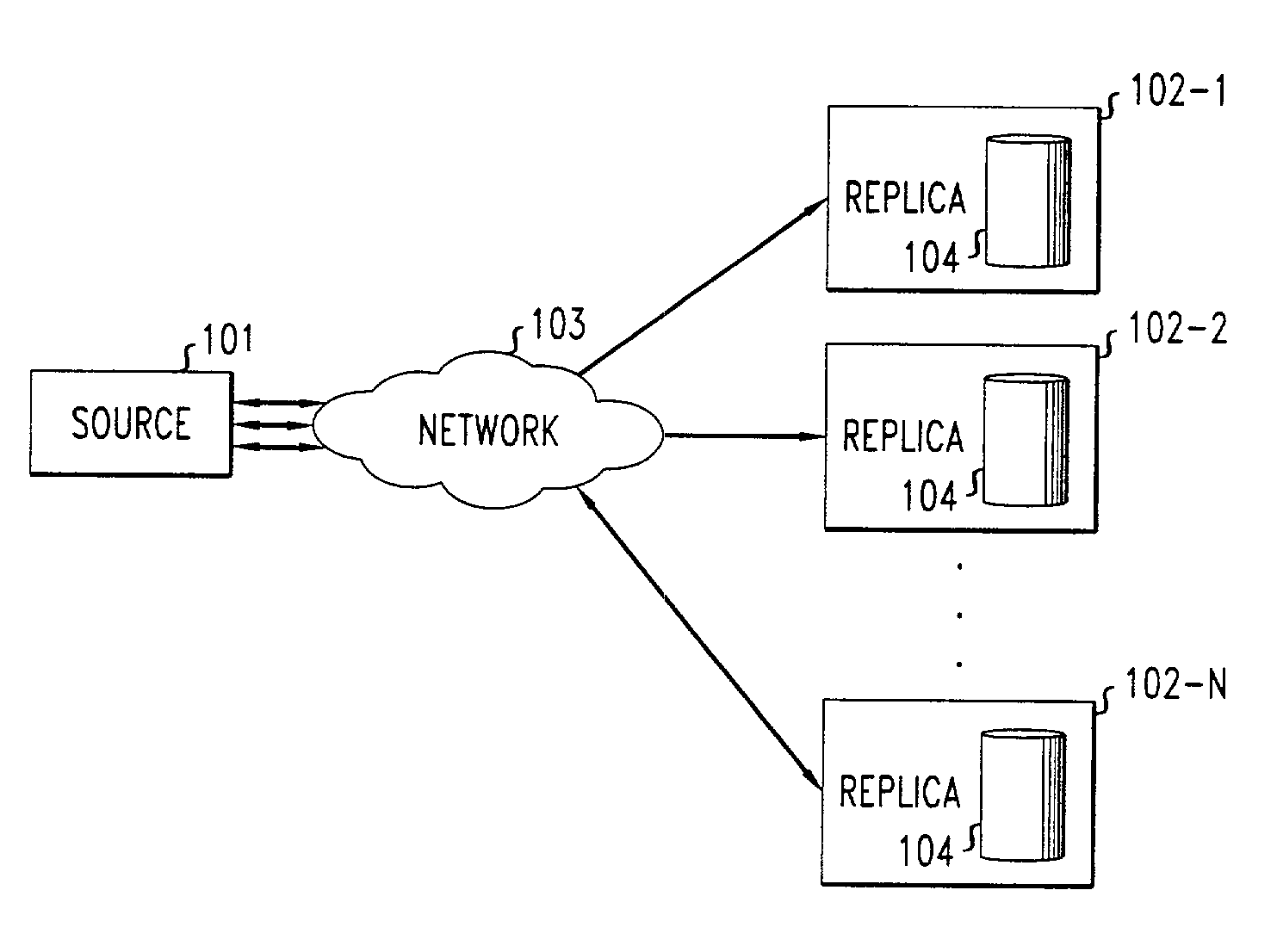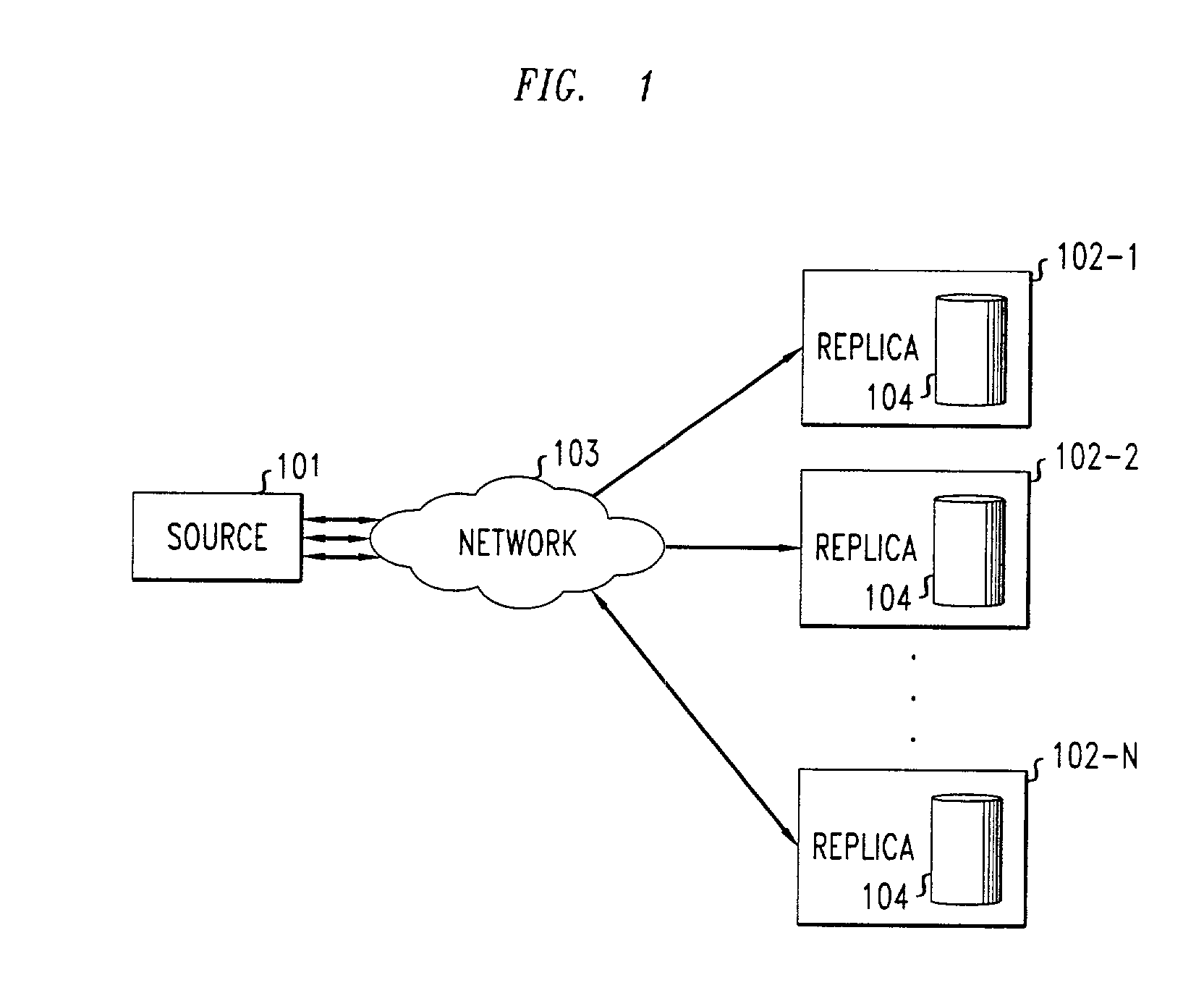Method for maintaining consistency and performing recovery in a replicated data storage system
- Summary
- Abstract
- Description
- Claims
- Application Information
AI Technical Summary
Benefits of technology
Problems solved by technology
Method used
Image
Examples
second embodiment
[0077]the recovery process reduces the number of data items sent by the sequential scan by eliminating the transfer of data items that were previously modified by a write request that have already been forwarded from the current replica to the recovering replica. In other words, the corresponding data item in the recovering replica already has the most recent value and its associated last_modified element contains the correct sequence number.
[0078]In the second embodiment, the current replica, and thus each replica in the system, includes an additional counter 309 (in FIG. 3) that stores a count start_high, which is the value of the current replica's high counter when recovery starts. During the sequential scan, the current replica forwards a data item to the recovering replica only if it was modified more recently than the recovering replica's low but before or at start_high. Since all of the write requests that the current replica performs and forwards to the recovering replica ha...
first embodiment
[0079]FIG. 12 depicts the operation of this embodiment of the recovery process in the current replica. Steps 1201–1213 correspond one-by-one to the steps 801–813, respectively, in FIG. 8 described above. Each individual common step will therefore not be described in detail since the similarity between the processes in FIGS. 8 and 12 is readily apparent to one skilled in the art. The steps that are different are described as follows. At step 1203, start_high is initialized by setting it to the current replica's high value. Then, during the sequential scan of data items, at step 1207, a test is made on each data item i to determine that the sequence number associated with the last update of that data item, last_modified[i], is both higher than the recovering replica's low, recovery_low and less than or equal to start_high. This prevents the sending of a data item that has been modified by a previously forwarded write request. On the recovering replica side, the process remains the sam...
PUM
 Login to View More
Login to View More Abstract
Description
Claims
Application Information
 Login to View More
Login to View More - R&D
- Intellectual Property
- Life Sciences
- Materials
- Tech Scout
- Unparalleled Data Quality
- Higher Quality Content
- 60% Fewer Hallucinations
Browse by: Latest US Patents, China's latest patents, Technical Efficacy Thesaurus, Application Domain, Technology Topic, Popular Technical Reports.
© 2025 PatSnap. All rights reserved.Legal|Privacy policy|Modern Slavery Act Transparency Statement|Sitemap|About US| Contact US: help@patsnap.com



